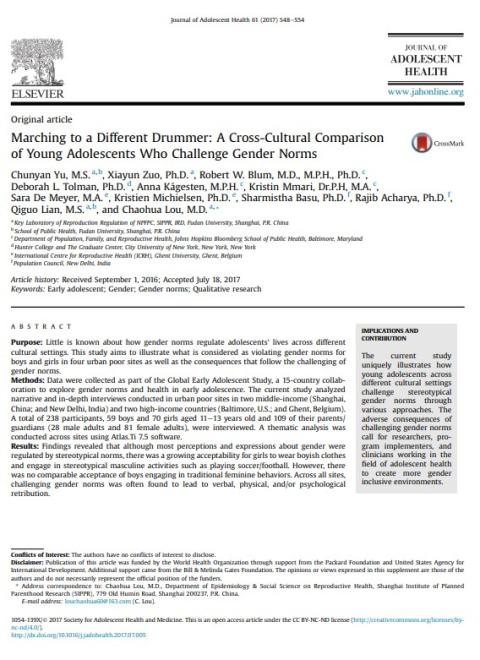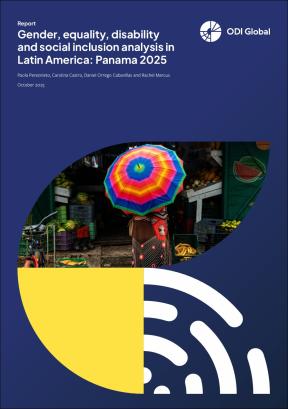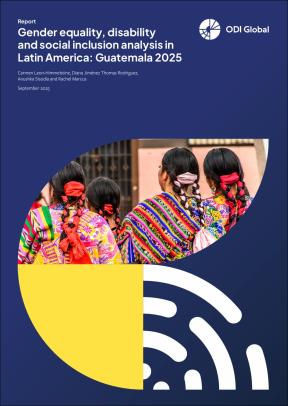- Journal article
- 1 October 2017
Marching to a different drummer: A cross-cultural comparison of young adolescents who challenge gender norms
- Author: Chunyan Yu, Xiayun Zuo, Robert W. Blum, Deborah L. Tolman, Anna Kågesten, Kristin Mmari, Sara De Meyer, Kristien Michielsen, Sharmistha Basu, Rajib Acharya, Qiguo Lian, Chaohua Lou
- Published by: Journal of adolescent health

Abstract
Purpose
Little is known about how gender norms regulate adolescents' lives across different cultural settings. This study aims to illustrate what is considered as violating gender norms for boys and girls in four urban poor sites as well as the consequences that follow the challenging of gender norms.
Methods
Data were collected as part of the Global Early Adolescent Study, a 15-country collaboration to explore gender norms and health in early adolescence. The current study analyzed narrative and in-depth interviews conducted in urban poor sites in two middle-income (Shanghai, China; and New Delhi, India) and two high-income countries (Baltimore, U.S.; and Ghent, Belgium). A total of 238 participants, 59 boys and 70 girls aged 11–13 years old and 109 of their parents/guardians (28 male adults and 81 female adults), were interviewed. A thematic analysis was conducted across sites using Atlas.Ti 7.5 software.
Results
Findings revealed that although most perceptions and expressions about gender were regulated by stereotypical norms, there was a growing acceptability for girls to wear boyish clothes and engage in stereotypical masculine activities such as playing soccer/football. However, there was no comparable acceptance of boys engaging in traditional feminine behaviors. Across all sites, challenging gender norms was often found to lead to verbal, physical, and/or psychological retribution.
Conclusions
While it is sometimes acceptable for young adolescents to cross gender boundaries, once it becomes clear that a behavior is socially defined as typical for the other sex, and the adolescent will face more resistance. Researchers, programmers, and clinicians working in the field of adolescent health need not only attend to those who are facing the consequences of challenging prevailing gender norms, but also to address the environment that fosters exclusion and underscores differences.
- Tags:
- Economic empowerment
- Countries / Regions:
- China, India, Belgium, United States of America
Related resources
Report
20 October 2025

Report
6 October 2025

Report
22 September 2025
